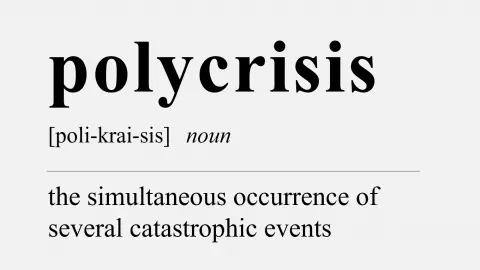The slow disinflationary trend continues in the CEE
We see continued improvement in headline inflation, with a majority of countries in the region experiencing a slowdown in economic activity. However, with core inflation remaining persistently high and wage growth on the upside, central banks will have to tread carefully. It is too soon to signal easing with confidence, except for Hungary
Poland: No room for cuts this year as core price disinflation remains slow
The beginning of 2023 was rather poor for the Polish economy. As a result, we revised our first quarter GDP forecast from -1.2% year-on-year to -1.5% and the weak start to the year increases downside risks to our 0.5% economic growth forecast for 2023 as a whole.
The March set of monthly data from the real economy was not a pretty picture. Industrial output, construction and retail sales all fell in annual terms. Sales of goods were 7.2% lower than in March 2022. That indicates that in the first quarter of the year, household consumption fell even more than the -1.1% YoY reported in the fourth quarter of 2022, contributing to the decline in first-quarter GDP. Growth was mainly driven by an improving foreign trade balance, while domestic demand was shrinking.
Despite two quarters of consumption contraction, there is only moderate progress on the inflation front. Headline inflation declined further in April – down to 14.7% YoY – but core inflation was broadly unchanged. It suggests that enterprises are still able to pass on higher costs onto their prices and disinflation is chiefly due to the easing energy shock and lower pressure from food prices. We expect disinflation in core prices to be much slower than in the case of headline CPI. With CPI only slightly below 10% YoY in December, and with the National Bank of Poland (NBP) target still far away, we expect the Monetary Policy Council (MPC) to keep policy rates unchanged by the end of this year and cuts may start in 2024.
The Polish zloty gained 2% against the euro in April and outperformed CEE peers. The market has largely shrugged off risks related to the FX mortgage saga, and with a trade surplus exporters remain strong sellers of the euro. Moreover, with EUR/USD rises, the domestic soft patch, and NBP easing, expectations should play a lesser role. Given the improving current account and expected weakening of the dollar, this prompts us to lower the EUR/PLN path in the remainder of the year. That said, technical analysis suggests, that at least the short-term scope for further PLN gains might have been largely exhausted.
The market continues to price NBP rate cuts in the second half of 2023. While we do not share this view, data for the remainder of this quarter and next (slowdown in headline CPI and soft real economy figures), as well as increasingly dovish MPC remarks, should only reinforce those expectations. Moreover, the government remains tame in pre-election promises, even signalling alternative financing sources (€24bn loans from the Recovery Fund). Given the debt-positive global environment, this may trigger curve flattening in the remainder of the quarter. Pre-election fiscal promises remain a major risk though (as opinion pools do not show a clear victory of the ruling PiS), but may start to manifest in June when the new election programme of the ruling PiS should be unveiled.
Czech Republic: Economy will recover in the second half of 2023
The Czech economy returned to soft positive growth of 0.1% quarter-on-quarter in the first quarter of this year, but remained negative in year-on-year terms (-0.2%). We expect the annual growth of GDP to remain negative in the first half of 2023 due to still declining household consumption, investment demand, and only soft growth of government spending.
During the remainder of 2023, however, the economy will likely show signs of a recovery, as gradually receding inflation will weigh less on the real purchasing power of households and the slowly improving external environment will support a gradual acceleration of exports. Yet investment demand will likely remain weak due to persistently high interest rates. Negative annual growth in the first half of 2023 and only a gradual recovery will result in an annual decline in 2023 of around -0.3%
A positive sign is that core inflation has been declining for four consecutive months, while in some other EU economies, core inflation is still picking up. This suggests that domestic inflationary pressures are slightly softening, which can be partly attributed to the relatively early start of hefty rate hikes from the Czech National Bank beginning in June 2021, when the economy was only just emerging from the Covid-19 lockdown.
The Czech koruna rebounded from 24.00 EUR/CZK in the post-Silicon Valley Bank period to record strong levels. We have seen weaker levels again in recent days, but we think the market is taking some profits given the long positioning, and we remain bullish on the CZK. The interest rate differential against EUR has fallen by around 30bp at the short end of the curve versus EUR rates and global conditions with a higher EUR/USD also supporting a further rally in the koruna. For now, we expect the koruna to settle in the 23.30-40 EUR/CZK band with the possibility of a further rally if global conditions allow.
Hungary: Gloom with some silver linings
Economic activity has slowed markedly during the first quarter based on high-frequency data. Retail sales, industry and construction underperformed throughout the first quarter, and we expect continued weakness in the first half of 2023. Thus the rebound from the ongoing technical recession will not be as robust as previously expected. Hence we downgrade our 2023 GDP growth outlook to 0.2%.
Inflation is mainly to blame as it has proven stickier than expected. Core inflation hit a new peak in March, while pending price increases in services could slow disinflation. The silver lining is that inflation will gradually decline throughout the year and real wage growth will flip back into positive territory at the end of the third quarter, which in our view will boost household savings. The central bank’s dovish pivot has started by cutting the top-end of its rate corridor by 450bp, and we see effective rate cuts starting in May or June. The deal-breaker here remains the local market’s stability accompanied by improving metrics of external balances and continued positive developments in the global risk environment.
Investors are now focused on the EU funds story yet again with the budgetary situation in mind. We still see the 3.9% deficit-to-GDP target as roughly realistic, but the latest Convergence Programme showed that the task won’t be easy as interest rate-related expenditures mount to 3.8% of GDP this year. The upwardly revised deficit targets of 2024-25 (by 0.4-0.4% of GDP) are also pointing to the direction that the government needs to manage the budgetary situation carefully. But markets continue to show confidence, evidenced by the stability of the EUR/HUF despite the effective easing cycle being at arm’s length. We expect EUR/HUF to oscillate in the current range of 370-380, depending on the progress in the EU story and the National Bank of Hungary’s boldness in the coming months. In our view, Hungarian government bonds can benefit the most from the combination of funding under control, monetary policy normalisation and positive news regarding EU funds (for more details, check out our Monitoring Hungary).
Romania: First quarter growth might surprise to the upside
As most of the high-frequency data show, economic activity in Romania seems to have remained quite resilient in the first quarter. While the industrial production advance has likely consolidated in negative territory, rather robust data could be observed in construction and services, bringing our +0.2% quarterly GDP advance estimate slightly on the conservative side. The relatively better-than-expected high-frequency data is underpinned by a still remarkable average wage growth (+14.8% as of February), which supports decent private consumption numbers (+6.8% as of March 2023).
On the inflation front, the National Bank of Romania (NBR) will release its latest forecasts in mid-May together with the May Inflation Report. Typically, the forecast revisions increase the short-term outlook while lowering the longer-term, but this time we expect the NBR to broadly maintain its forecasts from the previous report, which are pretty close to ours as well. We maintain our estimate of headline inflation touching 7.4% in December 2023.
We believe that NBR will stay on course and keep the key rate unchanged for the remainder of 2023. Should any upside pressures on EUR/RON emerge, the NBR will likely be more than willing to provide euro liquidity to the market in order to mop up some of the local currency surplus. Speaking of the currency, we have an already long-standing view that EUR/RON will be allowed to shift some 2.0-3.0% higher later this year, most likely when inflation is credibly within single digits. While we maintain our view, we must also notice that upside pressure on the pair has not been material and that the adjustment might take a bit longer to occur.
Download
Download article
12 May 2023
ING Monthly: We’re in a polycrisis – and this is what it means This bundle contains {bundle_entries}{/bundle_entries} articlesThis publication has been prepared by ING solely for information purposes irrespective of a particular user's means, financial situation or investment objectives. The information does not constitute investment recommendation, and nor is it investment, legal or tax advice or an offer or solicitation to purchase or sell any financial instrument. Read more





